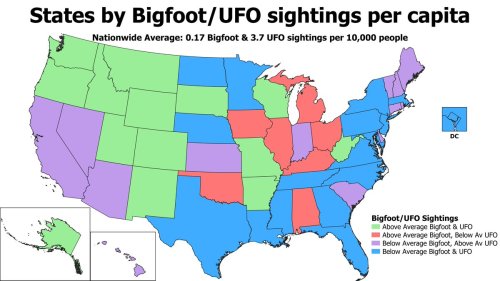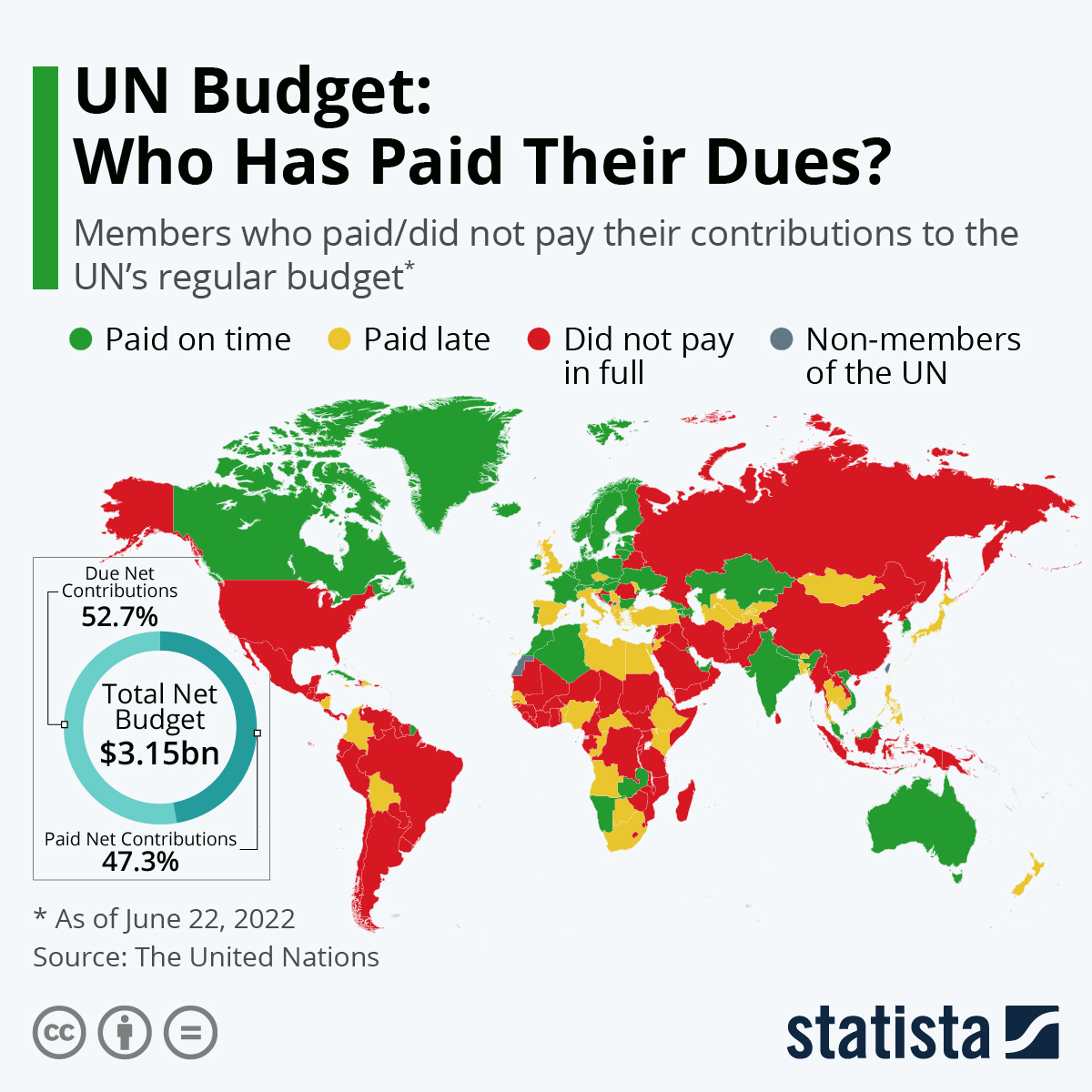I spent a couple of weeks working in Garden city Ks a few years back, they actually have a feedlot in town.
Map Porn
Moderator: Animal
- peterosehaircut
- No life apart from this stupid forum board
- Posts: 1918
- Joined: Mon Jan 07, 2019 4:30 pm
- stonedmegman
- In Search of vitamin T
- Posts: 3517
- Joined: Sat Oct 02, 2021 11:41 pm
- Location: Looking for Dave
Re: Map Porn
Reminds me of the days when Chatam Ontario use to have the largest pork yards in all of Ontario. They had roughly 250,000 head at any given time. When the wind blew right you could smell Chatam 20 miles out.peterosehaircut wrote: ↑Thu Jun 02, 2022 3:31 amI spent a couple of weeks working in Garden city Ks a few years back, they actually have a feedlot in town.
QANON IS JUST SCIENTOLOGY FOR HILLBILLIES
- FSchmertz
- UJR Chief Meme Factchecker
- Posts: 5216
- Joined: Mon Mar 18, 2019 1:37 am
Re: Map Porn
I've always wondered how much worse it actually is today, or if we're mostly just bombarded with the bad news more today.
If a place gets more urban/more people, then more incidents may occur, and maybe there's more poverty etc. But is part of the perception of increased risk a result of poor ability to access actual risk?
P.S. The classic example is the most risky thing people do is drive an automobile, though most people accept this risk. Almost anything you do other than this pales by comparison, but is perceived as an unacceptable risk.
If a place gets more urban/more people, then more incidents may occur, and maybe there's more poverty etc. But is part of the perception of increased risk a result of poor ability to access actual risk?
P.S. The classic example is the most risky thing people do is drive an automobile, though most people accept this risk. Almost anything you do other than this pales by comparison, but is perceived as an unacceptable risk.
- Animal
- The Great Pretender
- Posts: 28184
- Joined: Mon Jan 21, 2019 11:18 pm
Re: Map Porn
its a function of population density. if you still get out in the rural areas, the kids have just as much leeway as they used to. the more populated the less likely people are to know each other and look out for each other's kids.FSchmertz wrote: ↑Thu Jun 09, 2022 4:51 pm I've always wondered how much worse it actually is today, or if we're mostly just bombarded with the bad news more today.
If a place gets more urban/more people, then more incidents may occur, and maybe there's more poverty etc. But is part of the perception of increased risk a result of poor ability to access actual risk?
P.S. The classic example is the most risky thing people do is drive an automobile, though most people accept this risk. Almost anything you do other than this pales by comparison, but is perceived as an unacceptable risk.
-
rule34
- No life apart from this stupid forum board
- Posts: 1620
- Joined: Tue Jan 19, 2021 7:08 pm
Re: Map Porn
When I was a kid growing up on the farm before I was old enough to help dad.Animal wrote: ↑Thu Jun 09, 2022 4:55 pmits a function of population density. if you still get out in the rural areas, the kids have just as much leeway as they used to. the more populated the less likely people are to know each other and look out for each other's kids.FSchmertz wrote: ↑Thu Jun 09, 2022 4:51 pm I've always wondered how much worse it actually is today, or if we're mostly just bombarded with the bad news more today.
If a place gets more urban/more people, then more incidents may occur, and maybe there's more poverty etc. But is part of the perception of increased risk a result of poor ability to access actual risk?
P.S. The classic example is the most risky thing people do is drive an automobile, though most people accept this risk. Almost anything you do other than this pales by comparison, but is perceived as an unacceptable risk.
I would go outside of a morning and mom would tell me to come back in around noon if I wanted to eat.
du.du.du.dude looks like a lady
- FSchmertz
- UJR Chief Meme Factchecker
- Posts: 5216
- Joined: Mon Mar 18, 2019 1:37 am
Re: Map Porn
Yeah, where I grew up was considered suburbs, and everyone knew everyone.rule34 wrote: ↑Thu Jun 09, 2022 5:10 pmWhen I was a kid growing up on the farm before I was old enough to help dad.Animal wrote: ↑Thu Jun 09, 2022 4:55 pmits a function of population density. if you still get out in the rural areas, the kids have just as much leeway as they used to. the more populated the less likely people are to know each other and look out for each other's kids.FSchmertz wrote: ↑Thu Jun 09, 2022 4:51 pm I've always wondered how much worse it actually is today, or if we're mostly just bombarded with the bad news more today.
If a place gets more urban/more people, then more incidents may occur, and maybe there's more poverty etc. But is part of the perception of increased risk a result of poor ability to access actual risk?
P.S. The classic example is the most risky thing people do is drive an automobile, though most people accept this risk. Almost anything you do other than this pales by comparison, but is perceived as an unacceptable risk.
I would go outside of a morning and mom would tell me to come back in around noon if I wanted to eat.
You were watched by about a dozen moms.
-
Antknot
- Not UJR's Military Attaché
- Posts: 6798
- Joined: Sun Jan 06, 2019 11:30 pm
- Location: South Carolina
Re: Map Porn
No shit!FSchmertz wrote: ↑Thu Jun 09, 2022 5:34 pmYeah, where I grew up was considered suburbs, and everyone knew everyone.rule34 wrote: ↑Thu Jun 09, 2022 5:10 pmWhen I was a kid growing up on the farm before I was old enough to help dad.Animal wrote: ↑Thu Jun 09, 2022 4:55 pmits a function of population density. if you still get out in the rural areas, the kids have just as much leeway as they used to. the more populated the less likely people are to know each other and look out for each other's kids.FSchmertz wrote: ↑Thu Jun 09, 2022 4:51 pm I've always wondered how much worse it actually is today, or if we're mostly just bombarded with the bad news more today.
If a place gets more urban/more people, then more incidents may occur, and maybe there's more poverty etc. But is part of the perception of increased risk a result of poor ability to access actual risk?
P.S. The classic example is the most risky thing people do is drive an automobile, though most people accept this risk. Almost anything you do other than this pales by comparison, but is perceived as an unacceptable risk.
I would go outside of a morning and mom would tell me to come back in around noon if I wanted to eat.
You were watched by about a dozen moms.
- Homebrew
- Actually drinks Natty Lite.
- Posts: 1655
- Joined: Tue Jan 08, 2019 7:20 pm
- Location: Stirring the mashtun
Re: Map Porn

Washington State has both the most Bigfoot sightings and the most UFO sightings (per capita) 14 states are above the US average in Bigfoot/UFO sightings (green), 7 states above avg in Bigfoot but below in UFO (red), 13 below Bigfoot above UFO (purple), & 16 below in both (blue).
What if it was one guy with six guns?
- Animal
- The Great Pretender
- Posts: 28184
- Joined: Mon Jan 21, 2019 11:18 pm
Re: Map Porn
there is actually one hell of a lot that can be learned from the results of this map.Homebrew wrote: ↑Mon Jun 20, 2022 7:34 pm
Washington State has both the most Bigfoot sightings and the most UFO sightings (per capita) 14 states are above the US average in Bigfoot/UFO sightings (green), 7 states above avg in Bigfoot but below in UFO (red), 13 below Bigfoot above UFO (purple), & 16 below in both (blue).
- CentralTexasCrude
- Pumpkin Muppet
- Posts: 8351
- Joined: Sun Oct 04, 2020 11:07 pm
- Location: In the middle of frickin everywhere's bad thoughts.
- CentralTexasCrude
- Pumpkin Muppet
- Posts: 8351
- Joined: Sun Oct 04, 2020 11:07 pm
- Location: In the middle of frickin everywhere's bad thoughts.
Re: Map Porn
49 states producing world class corporations. Then there's Florida- Titty restaurant. 

- FSchmertz
- UJR Chief Meme Factchecker
- Posts: 5216
- Joined: Mon Mar 18, 2019 1:37 am
Re: Map Porn
Had no idea Campbell's was based in NJ
- FSchmertz
- UJR Chief Meme Factchecker
- Posts: 5216
- Joined: Mon Mar 18, 2019 1:37 am
Re: Map Porn
Looked up Mr. Pibb, which apparently was Coca-Cola's attempt to compete against Dr Pepper, and first marketed in "Pepper Territory."
I liked it better than Dr Pepper, but they've since changed it into something called Mr. Pibb Extra, which IMO isn't as good as the original or Dr Pepper, for that matter.
I liked it better than Dr Pepper, but they've since changed it into something called Mr. Pibb Extra, which IMO isn't as good as the original or Dr Pepper, for that matter.
- CentralTexasCrude
- Pumpkin Muppet
- Posts: 8351
- Joined: Sun Oct 04, 2020 11:07 pm
- Location: In the middle of frickin everywhere's bad thoughts.
- Animal
- The Great Pretender
- Posts: 28184
- Joined: Mon Jan 21, 2019 11:18 pm
Re: Map Porn
Illinois won't be Holt Cat for long.
- CentralTexasCrude
- Pumpkin Muppet
- Posts: 8351
- Joined: Sun Oct 04, 2020 11:07 pm
- Location: In the middle of frickin everywhere's bad thoughts.
- Animal
- The Great Pretender
- Posts: 28184
- Joined: Mon Jan 21, 2019 11:18 pm
Re: Map Porn
they are moving their headquarters to DFW. Irving to be exact.
- CentralTexasCrude
- Pumpkin Muppet
- Posts: 8351
- Joined: Sun Oct 04, 2020 11:07 pm
- Location: In the middle of frickin everywhere's bad thoughts.
Re: Map Porn
Following a crowded field. Don't even know why that map has DP. Can you imagine the Texas Fortune 500 companies ahead of it.
- FSchmertz
- UJR Chief Meme Factchecker
- Posts: 5216
- Joined: Mon Mar 18, 2019 1:37 am
Re: Map Porn
Checked, and they're apparently "moving" their headquarters to a facility that's been there since the 60's. Presumably changing their state of incorporation? (though most companies seem to incorporate in Delaware)CentralTexasCrude wrote: ↑Mon Jun 27, 2022 1:41 amFollowing a crowded field. Don't even know why that map has DP. Can you imagine the Texas Fortune 500 companies ahead of it.
P.S. Checked, yep, incorporated in Delaware
- Charliesheen
- Snarky Fucker
- Posts: 9252
- Joined: Mon Jan 07, 2019 10:49 am
- Animal
- The Great Pretender
- Posts: 28184
- Joined: Mon Jan 21, 2019 11:18 pm
Re: Map Porn
Texas is famous for having the original Dr Pepper plant. The one in Dublin, Tx still makes Dr Pepper with sugar cane sugar, which is supposed to be a big deal to go there and get.CentralTexasCrude wrote: ↑Mon Jun 27, 2022 1:41 amFollowing a crowded field. Don't even know why that map has DP. Can you imagine the Texas Fortune 500 companies ahead of it.
- Biker
- Official UJR Russian Asset
- Posts: 13148
- Joined: Sun Jan 06, 2019 7:22 pm
Re: Map Porn
Wait, I thought Biden restored our position in world affairs? This can't be right



